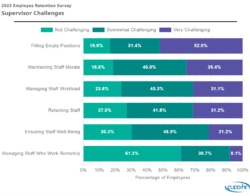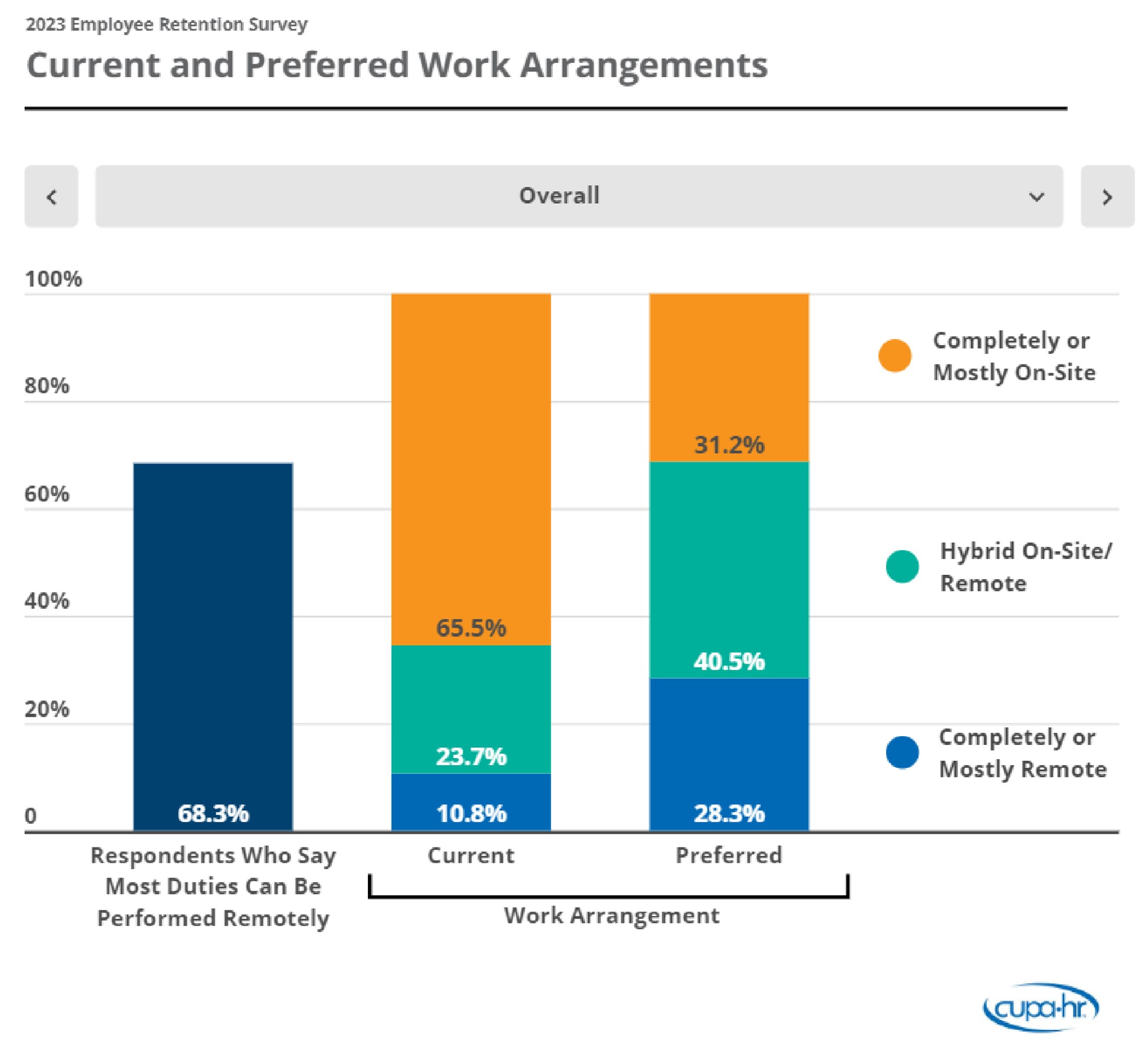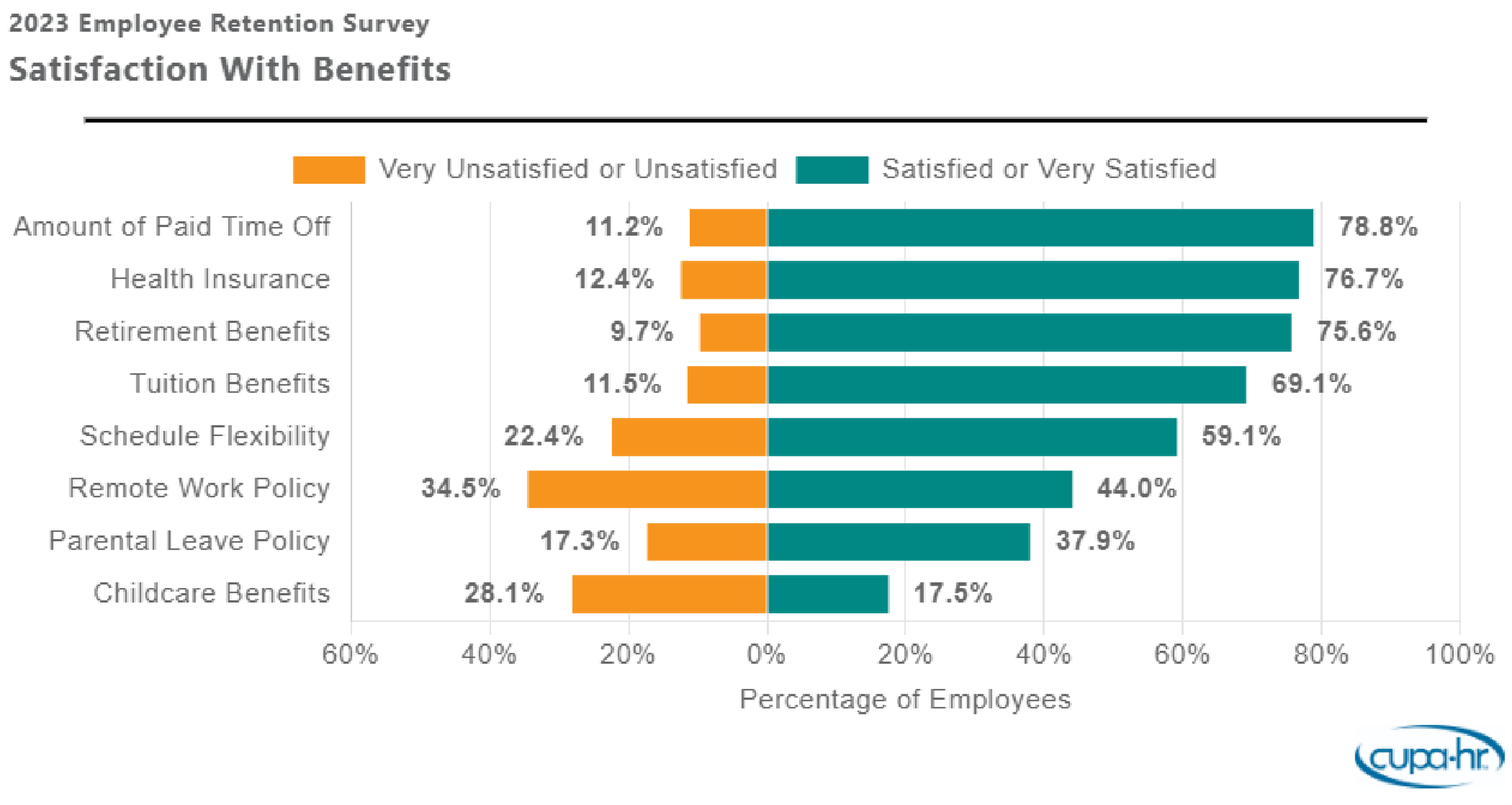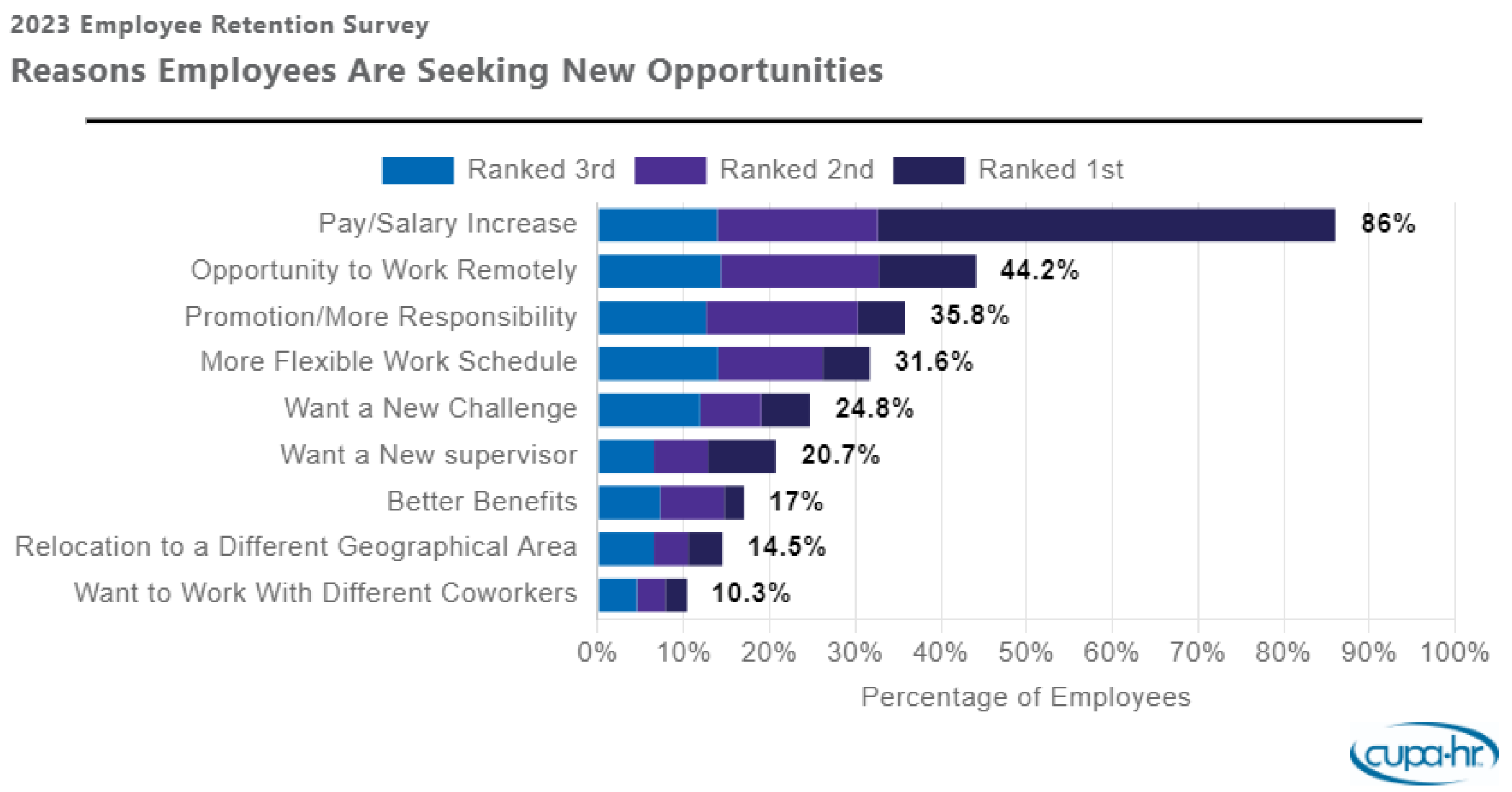by Julie Burrell | May 21, 2024
New CUPA-HR data show some improvement in turnover in the higher ed workforce, but staffing hasn’t fully bounced back to pre-pandemic levels. Managers still face challenges filling positions and maintaining morale, while employees are seeking jobs where their satisfaction and well-being are prioritized.
CUPA-HR’s recent webinar offers solutions that may move the needle on employee retention. Retaining Talent: Effective Employee Retention Strategies From Three Institutions brings together HR pros who showcase their high-impact, cost-effective approaches to increasing satisfaction and well-being, including:
- Professional development programs driven by employees’ interests
- Effective supervisor-employee communication, including stay interviews
- Actionable campus climate surveys using liaisons
- Mentoring programs and leadership pipelines
- Recognition programs and community-building events
- Employee Resource Groups to enhance belonging
Here are some of the highlights from their programs.
Stay Interviews at Drake University
A stay interview is a structured, informal conversation between an employee and a trained supervisor — and can be key to retaining top talent. Maureen De Armond, executive director of human resources at Drake, considers stay interviews to be a critical tool that nevertheless go underused in higher ed. Overall, only 8% of employees stated that they participated in a stay interview in the past year, according to The CUPA-HR 2023 Higher Education Employee Retention Survey.
De Armond stresses that stay interviews can build trust, increase communication, and show that you care about employees as people, not just their job performance. If you’re looking to get started, De Armond recommends checking out the Stay Interviews Toolkit.
Actionable Climate Surveys at the University of Texas Rio Grande Valley
What’s worse than not conducting a climate survey? Not doing anything with the answers employees have taken the time to provide, says Nicole Englitsch, organizational development manager at UTRGV. To make surveys actionable, they’ve enlisted campus climate liaisons.
These liaisons, who are mostly HR professionals, are assigned to specific departments. The liaisons have been trained by their external survey partners to help their departments understand the results and engage in action planning, guided by a three-year timeline. This network of partners helps ensure that UTRGV’s goals of making survey results both transparent and actionable are achieved.
For more on their employee engagement and retention efforts, see Building Leaders From Within: UT Rio Grande Valley Blends Leadership Development With a Master’s in Higher Ed Administration.
Recognition and Community-Building at Rollins College
How can institutions create a culture of belonging and valuing employees? David Zajchowski, director of human resources at Rollins, explains how their high-impact recognition and community-building programs range from informal coffee-and-doughnuts gatherings to special awards ceremonies for employees.
Probably the most popular way of valuing employees while increasing connection is Rollins’s annual Fox Day. On a random day in spring, the president surprises employees and students with a day off from work and class to participate in community-building college traditions.
Despite the effectiveness of employee recognition, many employers may be leaving this low-cost retention incentive on the table, as only 59% of higher ed employees said they received regular verbal recognition for their work in the Employee Retention Survey. Wondering how your employee recognition program stacks up? See a comparison of recognition programs and take a self-assessment here.







 But while pay is the top concern mentioned by employees, retention challenges are more complex.
But while pay is the top concern mentioned by employees, retention challenges are more complex.